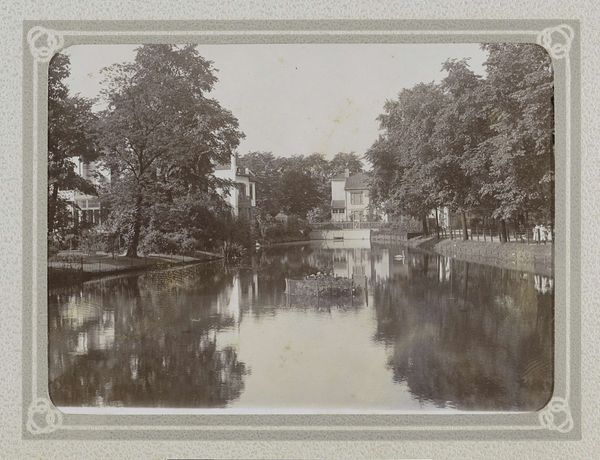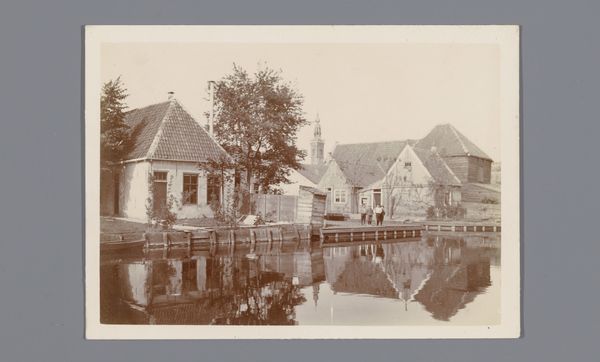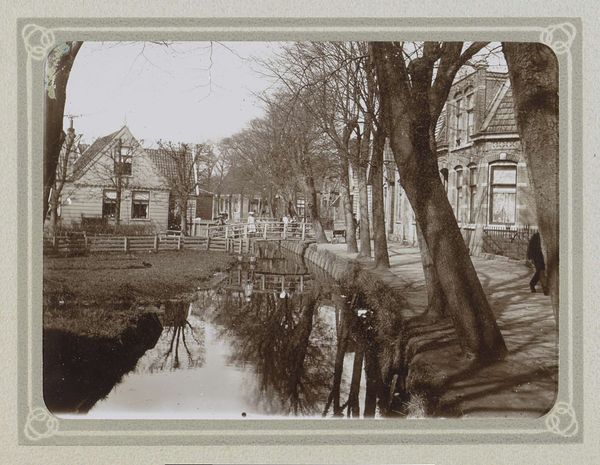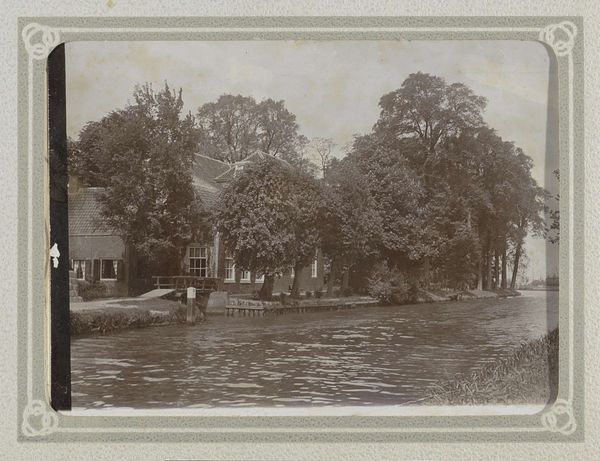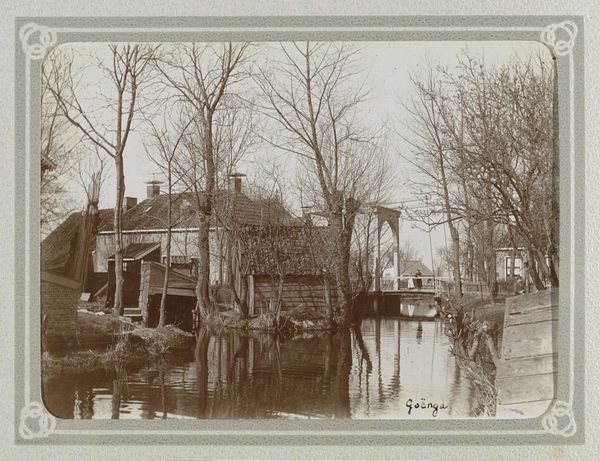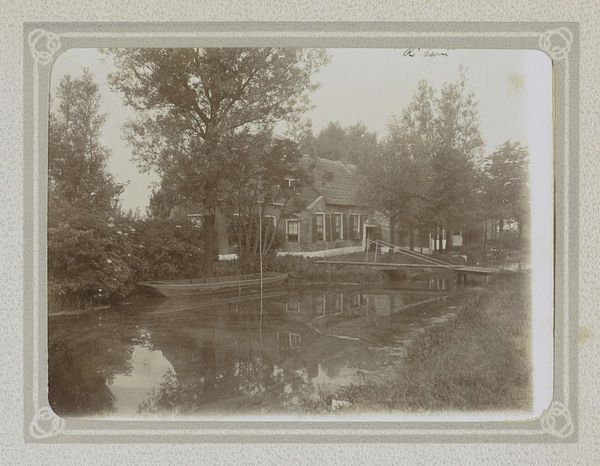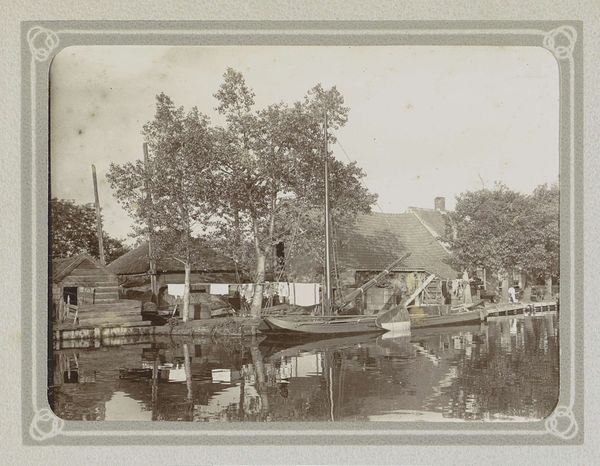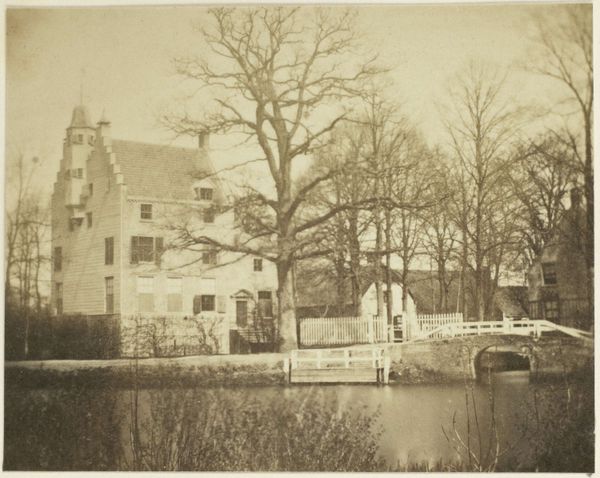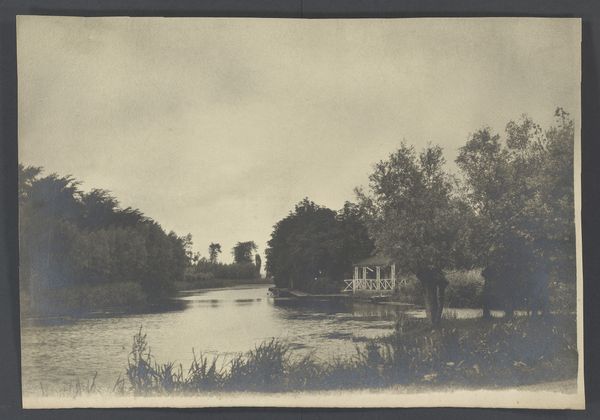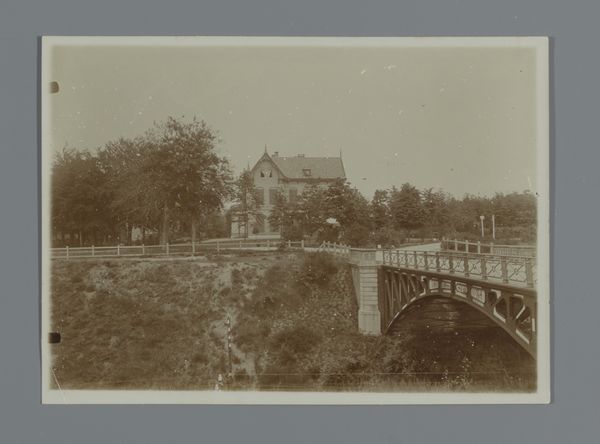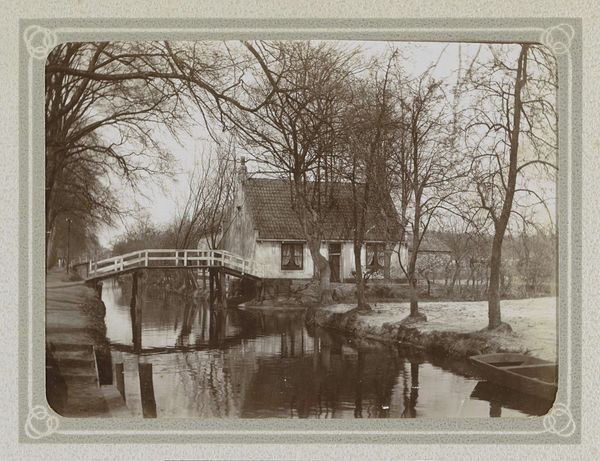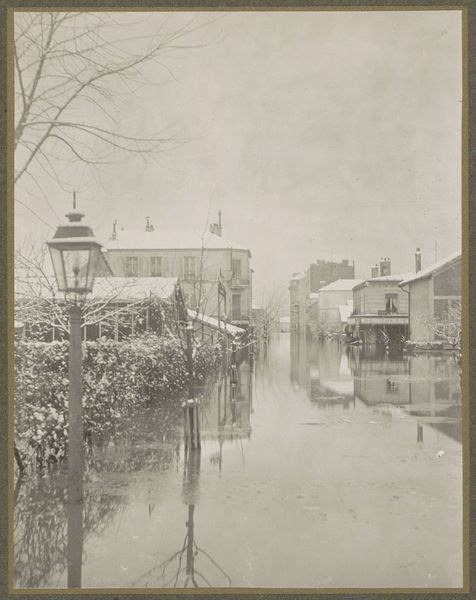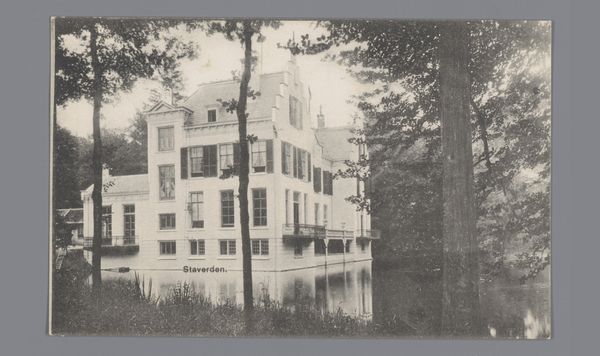
plein-air, photography, architecture
#
garden
#
muted colour palette
#
natural tone
#
plein-air
#
landscape
#
historic architecture
#
photography
#
cityscape
#
soft colour palette
#
architecture
Dimensions: height 81 mm, width 110 mm
Copyright: Rijks Museum: Open Domain
Curator: Welcome! Today, we're looking at "Huizen met tuinen aan een sloot in Joure," a photograph by Folkert Idzes de Jong, taken around 1905-1907. Editor: It’s instantly evocative. The sepia tones give it a dreamlike quality, a quiet stillness over the scene. There’s something so calming about it, despite being an urban scene. Curator: It’s interesting how De Jong captures this small Dutch town. Photography at the time played an important role in shaping civic identity. These idyllic scenes presented a curated image of urban life. Editor: Indeed. And thinking about the material reality of photography then – the labor, the chemicals, the darkroom... each print would have been a deliberate act. You really see how crafted the image is. Curator: Absolutely, the act of selecting and framing this specific viewpoint is loaded. Notice the deliberate exclusion of industry, for example, favoring gardens and serene waterways, it emphasizes prosperity and order. Editor: The buildings too, they’re modest but well-maintained. I’m drawn to how the artist positioned the composition in such a way to see how these domestic spaces, architecture and surrounding natural environment coexist side by side. This almost celebrates their interdependency. Curator: De Jong's images like this contributed to a romantic vision of Dutch urban life in that era, perhaps glossing over other realities for the sake of constructing a desired social image. These photographs ended up circulated in albums and postcards, shaping how people saw themselves and their communities. Editor: It reminds us how every image is carefully made, materially and ideologically, by choices of process and presentation and so, is the opposite of the ‘natural’ view we might naively assume when viewing landscape imagery. The way those gardens abut the canal gives one pause. It makes you wonder about material consumption versus serene displays, don't you think? Curator: It really underscores the powerful intersection of aesthetics and the construction of cultural identity. It offers so much more than first meets the eye, inviting to critically analyze that era. Editor: Agreed! De Jong's photograph allows for that important reflection on social history and how they shaped the collective conscious during a formative period.
Comments
No comments
Be the first to comment and join the conversation on the ultimate creative platform.
